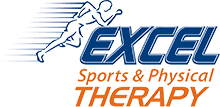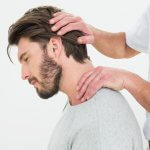Pain affects millions of people every day, including people injured at work, from playing sports and due to motor vehicle accidents. If you’re dealing with pain, it can be difficult to know what a safe level of activity should be.
Have you ever wondered whether it’s beneficial or harmful to exercise when you’re in pain?
Have you ever experienced worse pain after exercising when you are already hurting to start with?
Or perhaps you’ve had surgery, and after a few weeks, your neck, back, arm or leg is sore, tight and weak. Should you exercise or not?
If a medical or fitness provider gave you some exercises to do when in pain, do you wonder if you are really supposed to exercise when you’re hurting?
These are all important questions, and to answer them, it helps to explore a number of important factors. This includes the physical cause of pain, the recovery process and the significance of good spine and joint mobility. After reviewing the above topics, we will then discuss orthopedic physical therapy and specific modes of treatment designed to help the spine and extremities.
Physical cause of pain
Pain due to trauma, injury or as a consequence of physical dysfunction will cause the muscles to reflexively guard themselves from pain, which in turn leads to muscle tightness. When that occurs, the joints in the spine or extremity also become tight and restricted. Then the areas surrounding the joint restriction will pull and stretch every time a movement is initiated. The pulling and stretching always leads to pain. Muscle tightening increases and the pain cycle continues.
Therefore, when movement restrictions in the spine or extremities are not identified, the pain will always be there. As long as movement restrictions are present in the spine and extremities, there will always be compensation that leads to pain.
Recovery from pain due to a physical cause
To recover from pain due to a physical cause, three things must take place:
- Increased joint movement through joint mobilization — The normal joint mobility of the affected area must be regained. This is possible through orthopedic physical therapy techniques such as joint mobilization. When joint movements are restored to normal, there will be less pulling and stretching, therefore less pain.
- Maintenance of joint mobility through stretching exercises, soft tissue mobilization and positional traction in the lumbar spine — After normal joint movement is regained, it has to be maintained. This can be accomplished through stretching exercises as well as positional traction for the lumbar spine. A form of exercise is recommended only when mobility of the joints is increased to the normal state. If that doesn’t happen, exercise will just result in more pulling and stretching — and more pain. The muscles that were pulling and stretching due to joint restriction became weak and painful. For maximum physical recovery, these weak muscles must be made strong again.
- Increased muscle strength though stabilization and strengthening exercises — The third stage of physical recovery is to increase the strength of the muscles that became weak and painful due to pulling and stretching brought about by the joint restriction. Once the joint movements are regained and maintained, the muscles can now contract to their maximum and regain strength with less or no pain.
Length of recovery period for injury
Spinal or extremity joint mobility can be regained in one to two weeks through a treatment called joint manipulation/mobilization as performed by an orthopedic physical therapist. It will take four to six weeks to maximize strength once joint mobility is regained and maintained.
When your pain is at the same level or worse after six to eight weeks, even though good mobility and strength have been achieved, more medical tests and treatments may be necessary. A more severe condition may be present that is still causing pain.
Whatever may be the cause of pain, one still has to go through the physical recovery period; maximum physical recovery still has to be achieved. Detecting the cause of pain is of utmost importance.
Orthopedic physical therapy
Orthopedic manual physical therapy is a specialty in physical therapy that includes the evaluation and treatment of physical dysfunctions. This is defined as abnormal movements that can be due to a decrease or increase of mobility.
Orthopedic physical therapists play an important role in the evaluation of possible movement restrictions in the spine that can cause neck and back pain. Movement restrictions due to joint, muscle or soft tissue dysfunctions would cause compensatory injury and pain in surrounding areas. The goal is not to treat the pain but to examine and treat the physical cause of the pain, which are the movement restrictions in the spine and extremities.
How the spine and extremities are like a pulley system
A pulley system has a pulley and a belt. When the pulley is not moving and the belt is moved or forcefully moved, it can break the belt and cause more damage to the system.
In comparison with our bodies, the joint serves as the pulley and the muscle serves as the belt. When the joint is limited or not moving right and the muscles are stretched or exercised, the muscles will pull more and create problems. It can even tear the muscles and cause more damage.
To relieve the problem, you must first identify the joints that are not moving. Move the joints first through joint mobilization techniques; then move the muscles through stretching exercises. When you do this, your “pulley system” will then return to normal function.
Limited joint movements can be detected by orthopedic physical therapists through range-of-motion (ROM) testing for the extremities and passive intervertebral motion (PIVM) testing for the spine. They also perform the joint mobilization techniques to regain normal mobility of the joints. When joint mobility is increased to normal or close to normal, that will be the best time to perform stretching exercises followed by strengthening and stabilization exercises — just like the pulley system returning to normal function.
Recommendations for physical activity when dealing with pain
With all of the above in mind, I recommend the following guidelines for people dealing with pain:
- Stop exercising if you feel increased pain.
- When body movements are limited, don’t exercise. Consult your physician and/or physical therapist first.
- Medical and fitness providers usually choose not to prescribe exercises to patients or clients when pain is present.
- After patients undergo surgery, there is a potential for limited joint movements. Request your surgeon to refer you to physical therapy to maximize functional post-surgical recovery.
- An orthopedic physical therapist can detect normal extremity joint mobility through ROM testing and normal spine joint mobility through PIVM testing. When you are experiencing pain and are in doubt about whether to exercise, remember the pulley system and take advantage of orthopedic physical therapy.
If you have any questions or would like to learn more about the treatment options we offer, contact us today to schedule your initial appointment.
Gerry Catapang, PT, DPT, MGS, is the clinic director at Excel Sports & Physical Therapy in Affton, St. Louis, Missouri. He has been practicing orthopedic and sports physical therapy for more than 30 years.






